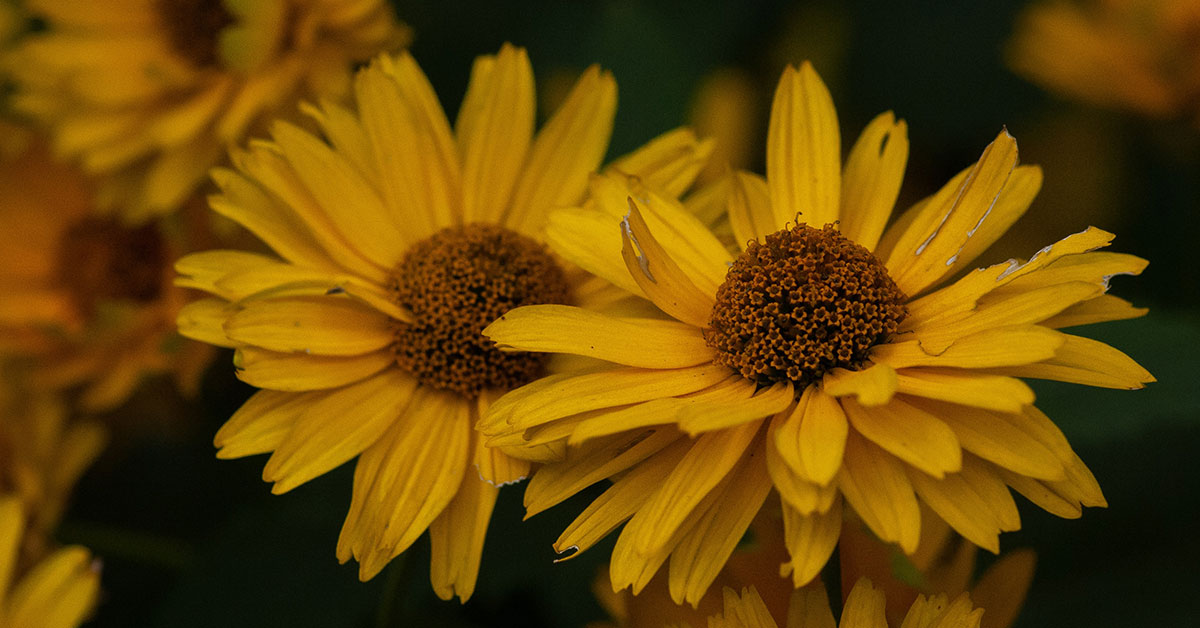Heliopsis flowers are very similar in appearance to sunflowers. But don’t be fooled by them! They are much easier to handle than those delicate plants. Moreover, since the plant is native to most of North America, it is a very common plant that occurs outside of gardens. It is an awesome choice if you are looking for a summer flower with considerable longevity.
Read more: These 22 perennials will thrive in your garden for decades
Growing Heliopsis
Heliopsis grows so easily that you might already have seen them in wooded areas in the neighborhood. They have a close connection to the real sunflowers, however, their seeds are not edible. They are extremely attractive to pollinators like birds and bees. Their seeds make for excellent bird food. Giving free rein to the birds will let you automatically propagate the plant.
Here is a quick look at the False Sunflower plant:
- Latin name: Heliopsis helianthoides
- Other names: False sunflower, oxeye sunflower
- Native to: North America
- Invasiveness: Slightly
- Tenderness: Herbaceous perennial
- Sun: Full Sun.
- Water: Watering it regularly enough to keep the soil moderately moist.
- Soil: Well-drained, medium moisture, average.
- Hardiness zone: Zones 3 through 9
- When to plant: Winter till Early Spring
- Spacing: 18” to 24”.
- Plant height: 3 to 6 ft.
- Bloom period: Mid to Late Summer
- Time to maturity: 3 to 4 years.
- Container friendly: Yes.
- Fertilizer: Not required.
- Toxicity: No.
- Deer resistant: Yes.
- Pest resistant: Yes.
You can plant heliopsis seeds in Fall or spring. If you are starting in spring, then seed them within the house about 4 to 6 weeks before the final frost of the season. If you choose Fall, then you can directly sow them in the latter part of August. The plant is one of the most dependable repeat bloomers, so expect flowers from summer till fall.
Heliopsis plant also tends to form clumps and stay in one location. They will not usually spread out over a garden. There are also varieties that have heavy tops. In such cases, you will need to stake the plant to protect them from damaging themselves.
Heliopsis’ blooms are long-lasting. Given their hardiness, gardeners can enjoy the plant for an extended period of time. If left unattended, heliopsis will definitely stage a comeback after colonizing the area. As such, some gardeners consider it a weed because of how abundant it is.
An important tip while growing heliopsis plant would be to pinch back flowers that are already spent. This will prevent them from re-seeding as well as encourage more blooms. However, you do not need to do this if you want the plant to spread in the area.
Water
Heliopsis is quite drought-resistant. However, they love slightly moist soil. So water them regularly, even more so when the soil has been dry for a while.
Sunlight
Heliopsis loves the sunlight and will prosper when they get as much sunlight as possible. They can survive partial shade, however, it will have an effect on the blooming and sturdiness of the plant. Moreover, a sunlight deficiency can cause them to grow leggy.
Soil
There is no soil type that heliopsis cannot grow in. Nevertheless, their preference is well-drained, average soil that has a neutral pH.
Fertilizing
This flower rarely requires fertilizers, unless the soil is very poor. However, if the soil is too rich it can make the plant become leggy. So if you do use fertilizer, make sure to be very light with the application.
Invasiveness
Heliopsis practically seed themselves, so they can bully other plants in the garden. However, handling them is easy. Just keep an eye out for undesirable young growths and pull them up before they can establish their roots.
Growing Heliopsis in containers
The compact nature of heliopsis makes it suitable for growing in containers. Container-grown specimens do not need any extra care than the ones grown outside. Just plenty of sunlight and regular watering.
Care & tips
Divide heliopsis clumps every 2 to 3 years to keep the central clumps healthy. You may also pinch them back or prune them in the middle of spring for the sturdier and shorter plants.
Common problems
As far as problems go, heliopsis is generally resistant to diseases and pests. However, it may face an aphid infestation as well as suffer from powdery mildew. The symptoms of an aphid infestation will be damaged/crumpled foliage. For powdery mildew, the leaves and stems will have gray or white splotches. Keep the plant in a spot with good air circulation to prevent these issues.
Propagating Heliopsis
The plant rarely needs help with propagation. However, you can divide it just to maintain its health. The birds and the other pollinators will spread heliopsis by themselves.
Uses for Heliopsis
Heliopsis is an amazingly simple plant used for decorating both outdoors and indoor gardens. You can actually plant them and forget about them because of how easily they grow.
Heliopsis is not known to be toxic in any records. For any gardener, beginner, or expert, heliopsis is an easy addition to any garden.




